In vivo reprogramming of wound-resident cells generates skin epithelial tissue
- PMID: 30185909
- PMCID: PMC9651909
- DOI: 10.1038/s41586-018-0477-4
In vivo reprogramming of wound-resident cells generates skin epithelial tissue
Abstract
Large cutaneous ulcers are, in severe cases, life threatening1,2. As the global population ages, non-healing ulcers are becoming increasingly common1,2. Treatment currently requires the transplantation of pre-existing epithelial components, such as skin grafts, or therapy using cultured cells2. Here we develop alternative supplies of epidermal coverage for the treatment of these kinds of wounds. We generated expandable epithelial tissues using in vivo reprogramming of wound-resident mesenchymal cells. Transduction of four transcription factors that specify the skin-cell lineage enabled efficient and rapid de novo epithelialization from the surface of cutaneous ulcers in mice. Our findings may provide a new therapeutic avenue for treating skin wounds and could be extended to other disease situations in which tissue homeostasis and repair are impaired.
Conflict of interest statement
Figures
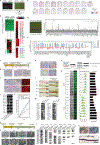


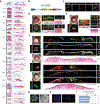
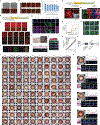
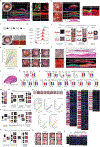
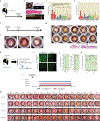







Comment in
-
Wound, heal thyself.Nat Med. 2018 Sep;24(9):1311-1312. doi: 10.1038/s41591-018-0179-3. Nat Med. 2018. PMID: 30194410 No abstract available.
-
More than One Way to Skin a Wound.Cell Stem Cell. 2018 Nov 1;23(5):636-638. doi: 10.1016/j.stem.2018.10.014. Cell Stem Cell. 2018. PMID: 30388420
Similar articles
-
Development of de novo epithelialization method for treatment of cutaneous ulcers.J Dermatol Sci. 2019 Jul;95(1):8-12. doi: 10.1016/j.jdermsci.2019.06.006. Epub 2019 Jun 22. J Dermatol Sci. 2019. PMID: 31255469
-
Cutaneous wound reepithelialization is compromised in mice lacking functional Slug (Snai2).J Dermatol Sci. 2009 Oct;56(1):19-26. doi: 10.1016/j.jdermsci.2009.06.009. Epub 2009 Jul 29. J Dermatol Sci. 2009. PMID: 19643582 Free PMC article.
-
Cell suspensions of autologous keratinocytes or autologous fibroblasts accelerate the healing of full thickness skin wounds in a diabetic porcine wound healing model.J Surg Res. 2009 Nov;157(1):14-20. doi: 10.1016/j.jss.2008.10.001. Epub 2008 Nov 4. J Surg Res. 2009. PMID: 19589541
-
Reprogramming of Keratinocytes as Donor or Target Cells Holds Great Promise for Cell Therapy and Regenerative Medicine.Stem Cell Rev Rep. 2019 Oct;15(5):680-689. doi: 10.1007/s12015-019-09900-8. Stem Cell Rev Rep. 2019. PMID: 31197578 Review.
-
Dressings and more: guidelines for topical wound management.Nurs Clin North Am. 2005 Jun;40(2):217-31. doi: 10.1016/j.cnur.2004.09.012. Nurs Clin North Am. 2005. PMID: 15924891 Review.
Cited by
-
Wound healing applications of creams and "smart" hydrogels.Exp Dermatol. 2021 Sep;30(9):1218-1232. doi: 10.1111/exd.14396. Epub 2021 Jun 7. Exp Dermatol. 2021. PMID: 34009648 Free PMC article. Review.
-
The San Diego Nathan Shock Center: tackling the heterogeneity of aging.Geroscience. 2021 Oct;43(5):2139-2148. doi: 10.1007/s11357-021-00426-x. Epub 2021 Aug 9. Geroscience. 2021. PMID: 34370163 Free PMC article.
-
Sonoporation-Mediated Gene Transfection: A Novel Direction for Cell Reprogramming In Vivo.Front Bioeng Biotechnol. 2022 Jan 31;9:803055. doi: 10.3389/fbioe.2021.803055. eCollection 2021. Front Bioeng Biotechnol. 2022. PMID: 35174147 Free PMC article. No abstract available.
-
Clinical-Scale Mesenchymal Stem Cell-Derived Extracellular Vesicle Therapy for Wound Healing.Int J Mol Sci. 2023 Feb 21;24(5):4273. doi: 10.3390/ijms24054273. Int J Mol Sci. 2023. PMID: 36901703 Free PMC article.
-
Discovering human cell-compatible gene therapy virus variants via optimized screening in mouse models.Cell Prolif. 2024 Mar;57(3):e13565. doi: 10.1111/cpr.13565. Epub 2023 Oct 20. Cell Prolif. 2024. PMID: 37864397 Free PMC article.
References
-
- Sun BK, Siprashvili Z & Khavari PA Advances in skin grafting and treatment of cutaneous wounds. Science 346, 941–945 (2014). - PubMed
-
- Gurtner GC, Werner S, Barrandon Y & Longaker MT Wound repair and regeneration. Nature 453, 314–321 (2008). - PubMed
-
- Takahashi K & Yamanaka S Induction of pluripotent stem cells from mouse embryonic and adult fibroblast cultures by defined factors. Cell 126, 663–676 (2006). - PubMed
Publication types
MeSH terms
Substances
Grants and funding
LinkOut - more resources
Full Text Sources
Other Literature Sources
Medical
Molecular Biology Databases
Research Materials

